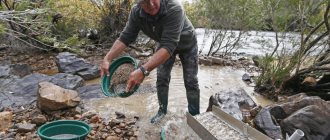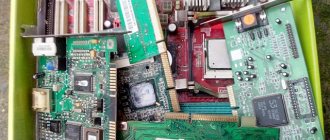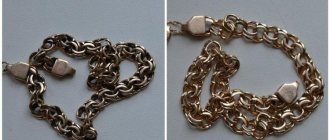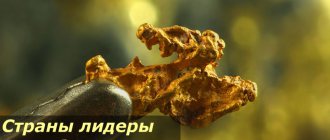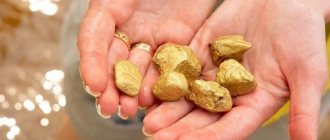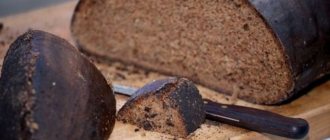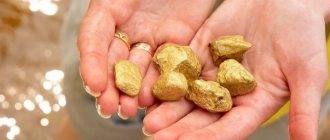Summer is the “golden time” for search engines in every sense of the word. It is at this time of year that vacationers have a blast splashing in the cool water of the nearest river, lake and other bodies of water. Unfortunately (or fortunately for the treasure hunter), they do not always care about the safety of jewelry. They manage to lose chains, pendants, earrings, even rings on the beach. Of course, the bulk of these jewelry sinks to the bottom irrevocably for their owners, but this is where search engines can work. Modern metal detectors, capable of descending at least a meter under water, when searching on the beach, make it possible to boast of such a catch of jewelry and gold that you don’t feel sorry for the time that could be spent on water procedures.
Beach search is a real salvation for those who have a younger generation in their family. Of course, it is not very wise to trust an expensive and complex device to a child, but if your unit has already served well and is quite light in weight, you can keep your child busy with it to enjoy the delights of the warm summer to the fullest. If you “go hunting” alone, so much the better, no one will distract you from an entertaining pastime. You should prepare in advance so that in the chaos of family gatherings you don’t forget all the necessary items - the metal detector itself, a bag for finds, a shovel for digging and other useful things.
Be prepared for the fact that on the beach, in addition to the coveted jewelry, you will also find a lot of garbage, which, of course, will be a hindrance. Drink can pull tabs, bottle caps, rusty nails, and wire all give off false signals. Many searchers, in an attempt to narrow their search as much as possible, often exclude debris from the search by waving it in front of the search coil. This is the difference between beach gold and jewelry searches and ground work - gold has an average level of conductivity and can be identified as small objects made of aluminum, that is, these same lids and reeds. Therefore, if you want to become the owner of gold trinkets, you will have to tinker a lot among this metal trash.
Searching in the water is, in some ways, easier than searching in the coastal strip. There is less garbage here, and the chance of finding something valuable is much higher, because vacationers will look for a ring dropped on the beach with great diligence, and maybe even find it. But diving for a lost bracelet without the help of a metal detector is a futile task. The searcher's problem when searching in water is not to lose the found trinket from his hands, which happens quite often. To do this, you will need a bag for finds, so that it provides maximum comfort during the search; you can cut small holes in it to drain water.
Beach Search Equipment
So what should you take with you when you go to the beach? Of course, first of all, a metal detector, and an underwater one or with the ability to dive to some depth thanks to a waterproof coil.
Real submariners
Metal detector Garrett Infinium LS
| |
Metal detector Garrett Sea Hunter Mark ll
| |
Metal detector Minelab Excalibur 2
|
Ground metal detectors with the ability to search on the beach (depth up to 3 meters)
Metal detector Garrett AT GOLD
| |
Metal detector Garrett AT Pro
| |
Metal detector Garrett ATX
|
Scoop (Scoob) for beach posk
A special scoop for searching on the beach, Scoop, looks like a basket scoop with numerous holes. In principle, you can build something similar with your own hands. The main thing is to be able to attach a longer handle (handle), because at a depth of more than a meter it is almost impossible to dig up a find with a scoop without a handle, unless, of course, you set yourself the task of staying under water for so long that you get into the Guinness Book of Records. We warn you right away - there is nothing to do with an ordinary shovel under water.
Lost and Found Bag
This is a mandatory attribute of a real search engine. Well, think for yourself, where will you put the brooch or coin you find? In the water, you will not have the opportunity to throw the find into your pocket; underpants are not an option; from there it will quickly slip back into the muddy waters of the reservoir. That's why you need to pay special attention to your bag.
You can also (if possible) use a wetsuit, although this mainly applies to real underwater searching, when the possibility of getting scratched on the reefs is real, and in general, when staying in water for a long time, it is advisable to use appropriate equipment. If you come up with the idea of wandering around with a metal detector in the water when its temperature has already dropped to cold, always use high waders, they will keep you healthy and avoid troubles with cold kidneys.
Looking for gold in the streams
Unlike searching for ready-made gold items, searching for real gold nuggets is a much more complex and adventurous undertaking. In some cases, miners may search for gold for several months without a positive result. The position of Russia in the list of countries with gold deposits adds confidence to such adventurers; it ranks fifth in the world in terms of total production of the precious substance.
Geologists recommend searching for gold only in places where it could potentially be found; for this purpose, many methods have been developed for extracting the metal in the form of scales, nuggets or sand. It is also highly likely that gold can be found in areas that were previously developed by gold mining companies.
Geological exploration work for the presence of gold has long been carried out throughout the entire territory of the former USSR, so it is no secret to anyone where the remains of the precious metal can be found. Due to the presence of rivers and streams in the immediate vicinity of the developed deposits, a lot of gold was washed away in the water and carried away with the current.
Gold at a river bend
Professional gold miners offer simple schemes for searching for precious metals in river areas. For example: when the channel turns sharply, the soil washes up and forms rather large pumps (ridges), in which, with a high percentage of probability, you can find an accumulation of golden sand or threads. The main thing in this case is to take into account the correct (from the side of the mines) direction of the flow of the river (stream).
Also, high banks can serve as places for gold deposits in river beds: when the water level drops, rocks containing this precious metal often appear on the surface.
Metal can be found on the surface, in mountain streams, and in rocks. It’s not worth looking in places that have not been targeted for gold - most likely you won’t find anything, and your time will be wasted. If even a grain of gold was found, this may indicate the potential usefulness of a place in which there is likely to be another nugget.
Beach Search Process
- Searching on the beach is quite easy considering the fact that the sand is easy to dig into. In principle, it has no differences from a ground detector - you drive a metal detector, it makes a sound of the desired tone or displays the type of find on an identification scale.
- As for searching in water, there is a difference here, because you are not able to accurately determine the place where the signal is coming from. To make the search easier, there is one tricky move - when you hear a sound, place your foot next to the coil, then remove the coil and start digging next to your leg using a scoop.
- Don't miss the opportunity to try your hand after a low tide or a storm, as the water washes onto the coast treasures that were lost far beyond the capabilities of your detector. Look immediately after the weekend, first of all, explore crowded places, especially near stands with alcoholic drinks and places of beach sports competitions.
If you approach the matter correctly and use all the useful tips, searching for jewelry and gold on the beach will certainly reward you with interest! Good luck with your beach search!
Who to cooperate with: professionals or amateurs
When thinking about whether to join professionals or amateurs in gold prospecting, it is important to understand that the first category requires not only experience, but also quite expensive equipment that requires investing your own funds. Also, a lot depends on what the search means for the person himself - an opportunity to earn money or simple entertainment. Therefore, it is best for beginners to choose the path of hobbyists who use simple equipment and incur virtually no costs. Gradually, having gained experience, you can move on to professionals.
Modern gold mining methods
Manual method of gold mining
Humanity has been searching for and developing precious metals for a long time. And mining was carried out using rather primitive methods, which, however, have survived to this day. They are combined in traditional ways.
With the development of the engineering industry, new methods of gold mining have emerged, which are called modern.
- Manual gold panning method. Currently, this method is not officially used and is considered artisanal. To wash gold-bearing sand, homemade devices are used, as a result of which particles of the precious metal settle on the retaining surface (sieve, burlap), and ordinary sand is washed off. This type of work requires a lot of patience and is time-consuming and labor-intensive. The miner must stay in the water for a long time. But according to the results, all this may not pay off, since it is impossible to predict the amount of gold received.
- Mechanized mines. Modern advances in engineering make it possible to make the work of searchers easier. With the help of special devices, bottom soil is lifted, washed, and processed with less labor and time. But despite this, manual labor for gold mining remains quite high. Therefore, work in the mines is considered one of the hardest.
- Extraction from ore. This method involves the extraction of gold by hand or mechanization from rock extracted from mines or quarries.
Gold deposits
There are quite a lot of places where the search for gold can end successfully. Most often, gold ores are found in the mountains near water. Mountainous areas have gold veins in different depressions. Also, veins are often located near faults and cracks and follow the line of rivers. Such veins can be hundreds of meters long or extend for several kilometers.
Thanks to the thirst for profit, the search for gold by prospectors helps to identify pure gold veins and rich places containing precious metal.
Considering that vein deposits can be found at different depths, they are conventionally divided into three categories:
- Low temperature;
- Medium temperature;
- High temperature.
The precious metal sometimes becomes one of the components of the gold-polymetallic zone, which also contains zinc, silver and lead. In chalk formations you can also find gold veins hidden in faults or cracks. Searching for gold in streams is often recorded on video, which a novice gold miner can watch and thereby add another point to his knowledge bank.
In such areas of the earth, gold lies with admixtures of quartz, sulfides or other substances. The most successful gold miners know that with the right approach to gold searching, you can find a truly large deposit of this type.
Types of deposits
The most popular gold deposit is quartz, the veins of which nature created many years ago. Over time, the veins experienced the influence of various natural factors, and as a result, the gold floated into the rivers. Gold survived the impact of stones that crushed and polished it. Due to its weight, it was deposited in the ducts. Geologists can determine the history of a particular sample and its proximity to the vein with just a glance.
The search itself is carried out using trays - they sift through the top layer of the river bottom. When sifting through the water, gold grains remain on the mesh of the tray. The technology is as simple as possible, but requires monotonous and long work. Searching for gold in streams can only be effective with proper preparation of the seeker, who is committed to hard prospecting work. Knowledge of the characteristics of the metal and the skills of searching and mining the mineral will definitely help to improve your financial situation, with, of course, the favor of good luck to the seeker of the precious metal.
Necessary equipment for independent searches
To search for gold, you will need a metal detector, a small trough or mini-dredge for washing gold sand. You will also need equipment that will match the search location.
To pan for gold in the river you will need a small trough or tray, rectangular or round, about 40 cm long (diameter), as well as a sieve. The gold digger can rejoice if at least one shiny grain remains in the sieve: this means that the placer has been found. If there is no such effect, then you need to try further. Such work requires enormous patience.
In this regard, a minidrag is more convenient for seekers, since it itself sucks up sand from the bottom of the river and separates gold particles mechanically. But there is only one drawback - the minidrag is quite noisy, so it unnecessarily attracts attention. And since the normal structure of the river bottom is disrupted, if such an installation is discovered by natural defenders, they can run into big trouble. But this problem can be circumvented by purchasing a special license. In this case, no one will be able to present anything.
Features and characteristics of the desired gold
Gold can be quite easily confused with other minerals if the miner does not know the characteristic features of the metal. It is well known that gold in its original form has a yellow tint and luster. Other substances, such as pyrite and chalcopyrite, may also have such characteristics.
Gold found in the natural environment has a malleable structure and is excellent for forging. It will not oxidize, but will easily dissolve in nitric or hydrochloric acids. If gold is sought in ore, then it is necessary to remember about the possible intergrowth of gold with other types of minerals; chalcopyrite and pyrite usually appear separately. Most often, gold grows together with quartz, in this connection it most closely resembles a grain or plate.
Gold placers are usually characterized by hook-shaped grains; in this form, the natural metal is presented in the form of nuggets. In size, gold can be:
- Fine (thinner than 10 microns);
- Visible (up to 4 mm);
- Nuggets (up to 10 kg).
To distinguish gold from pyrite and chalcopyrite, it is necessary to evaluate the color of the surface, for which the nugget must be examined from different angles. Gold will not change its appearance from any angle, but pyrite, on the contrary, will turn from bright yellow to gray. Gold is also checked with a knife; the precious metal is not destroyed, but is damaged, receiving grooves and deep scratches from the knife. In order to correctly search for gold, without wasting time on similar-looking minerals, you will study a video explaining the procedure for searching for the precious metal.
If, even after such tests, you doubt whether the mineral is gold, you can test it with sulfuric acid. Gold will not change in any way when immersed, but pyrite will change color to black, while chalcopyrite will turn red.


